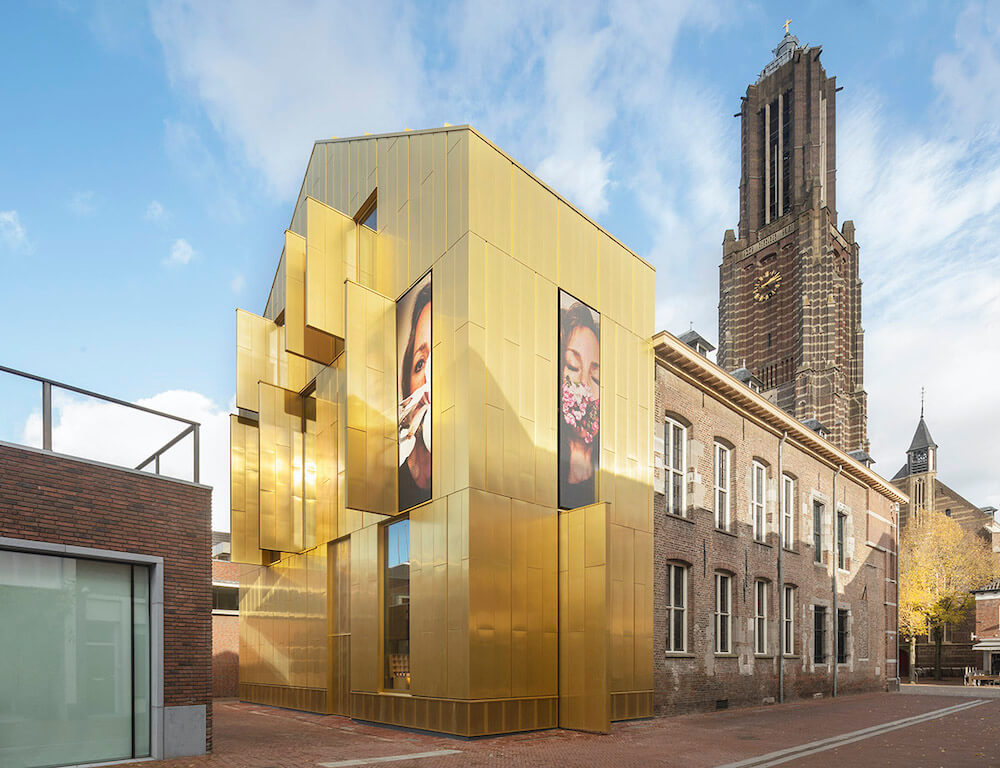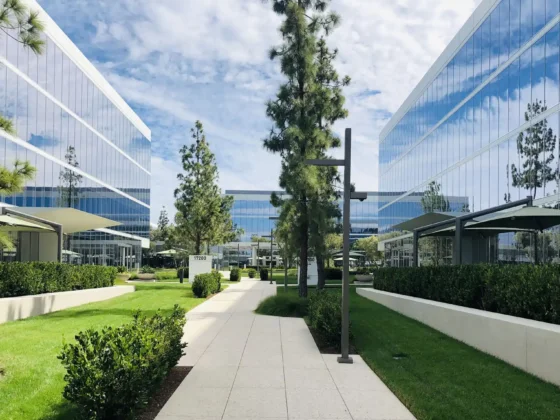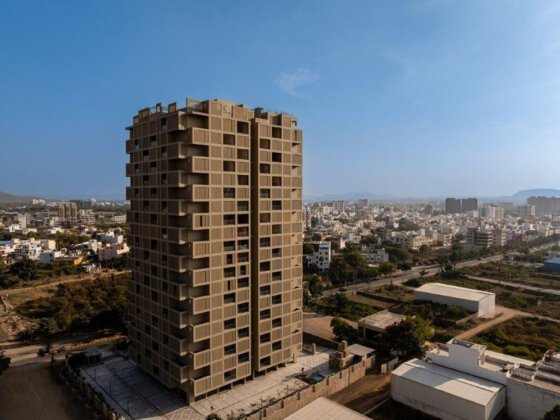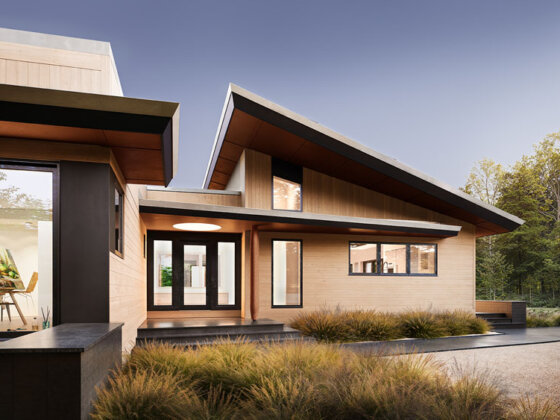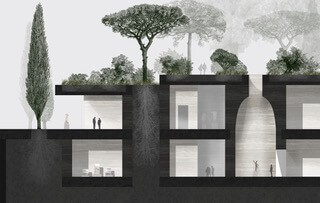Holtum, The Netherlands
Dutch Interior designer Maurice Mentjens renovates the old Municipal Museum of Weert adding an eye-catching matte gold-skinned exterior in an attempt to blend past and present.

The City Council of Weert appointed Maurice Mentjens to restore and refurbish its local Municipal Museum which housed till recently Weert’s former city hall since 1982.
The designer decided to blend past and present in a golden-skinned national heritage-listed building.

He places large golden-yellow shutters that complement the historic elements of the building, creating a monumental entrance.
With this renovation, the project enriches the interior of the building with a brand new museum interior, while making visible the monumental historical elements of this important national heritage site in the center of Weert.

“Museums are the holy places of our present-day secularized society and works of art are the relics of every culture,” explains Maurice Mentjens.
“These are preserved for posterity in museums. On the basis of this premise, the idea of designing the rear façade of the museum to resemble a gold-cladded reliquary, in which the relics of the holy are kept, was conceived.”

The modern golden façade features two large screens on which video installations created by artists or information about current or future exhibitions are projected.
The large windows serve as showcases for the works of art, which in turn serve as display windows or visual depositories, to give passers-by a glimpse of the museum’s treasures, as if they were relics in a reliquary.

The façade, which is fitted with golden shutters on all stories, refers not only to the historic façade on the Markt side with its characteristic red shutters flanking the cross windows, but can also be construed as an enormous Advent calendar: behind every shutter, a “treasure” – a relic or work of art – is concealed.
Covering a total of 1,134-square-metre area, the three-story museum creates distinct exhibition spaces for permanent or temporary collections.
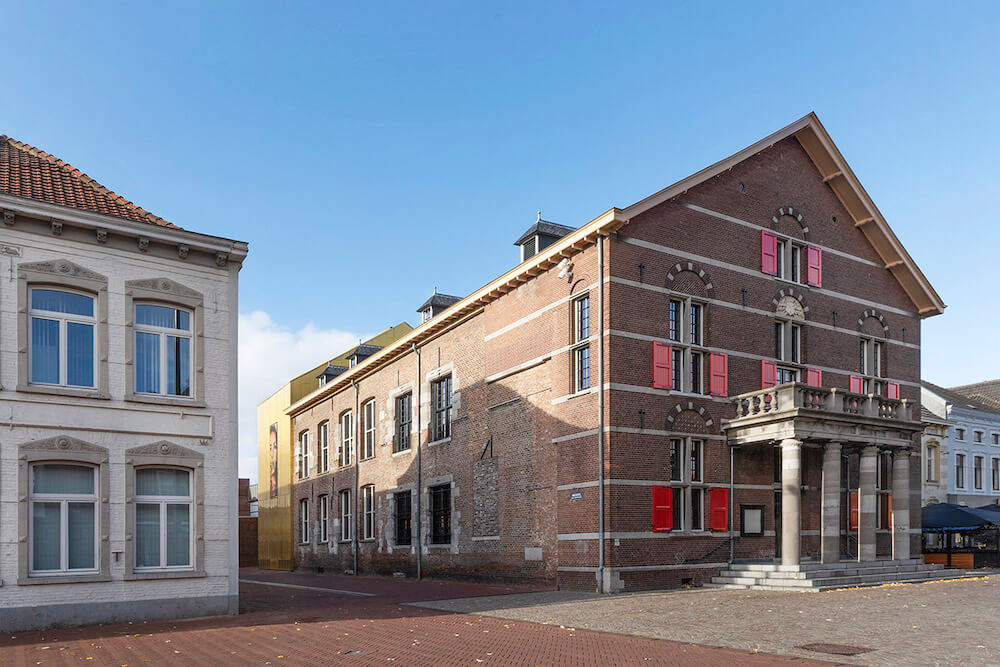
The new façade is implemented in the rear part of the historic building.
The designer preserves the oldest elements of this section, as well as the south-facing façade on De Meikoel, dating back to the mid-16th century.
Directly opposite Saint Martin’s Church, the second façade at the front, facing the Markt, comprises an additional shell, as it were, that is typified by the large-scale Renaissance Revival-style restoration that was carried out in 1913.

Following the discovery of late-Medieval elements articulating the layout of the façade and window frames on the south-facing façade, the recent renovation of the old west-facing façade in 2021 revealed a natural stone window frame and arches.
According to the designer, unlike brass, “this material does not age or turn brown or black.” It remains a lovely matte shade of golden yellow, just like euro coins which are made from the same material.

The cladding on the façade is 1 mm thick. Each sheet has been folded over at the sides, which gives the façade a pronounced sense of rigidity. In addition, a 20 mm-thick hard-pressed insulation panel has been glued behind each Tecu®Gold panel. This increases the rigidity of the structure even more.
“The material also represents immense cultural wealth and therefore serves as a beautiful reference to the priceless history that is preserved here for future generations.”

While some of the parts are restored to their former glory, such as the wainscoting in the halls and the original oak ceiling in the old Council Hall, some parts were redesigned so that the museum can accommodate new facilities in a contemporary look.
For example, the walls of the monumental hall have been clad in a new textile covering. The venue is currently used for exhibitions and activities that can be attended by the general public, such as lectures and concerts.

The designer, on purpose, relocated the entrance on the south-facing façade so that the museum would have an easily recognizable entrance on the ground floor for problem-free access by wheelchair users.
“This new arrangement also makes it possible to use all the distinct exhibition spaces on the ground floor as a single continuous exhibition, without any differences in elevation, to facilitate large-scale temporary exhibitions,” states the press release.

The majestic entrance on the Markt, with its pillars and exterior staircase, will be used for special events such as weddings and ceremonial gatherings, as well as film showings and musical and theatrical performances in the building.
The designer added contemporary elements to the main building with “a quasi-surgical operation,” with the deepest respect for the building’s heritage.
For instance, the designer installed a remarkably slim staircase in the existing stairwell and which projects from the wall like a minstrel’s gallery.
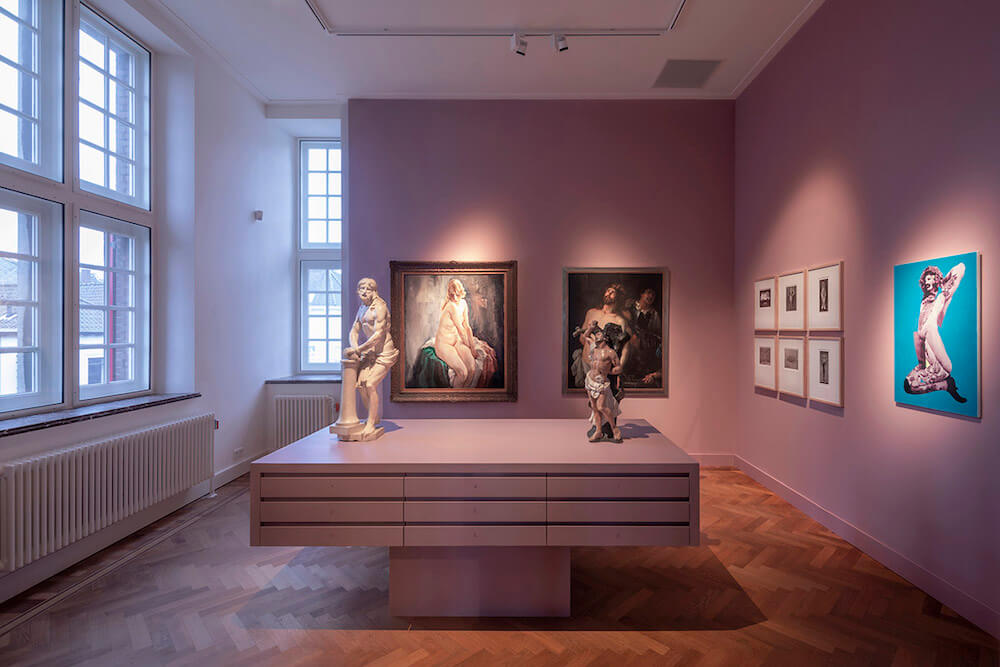
The attic floor will function for the museum’s permanent collections and educational activities, which can be accessed by these stairs.
The new gold yellow extension contains an emergency staircase, a lift, sanitary facilities, offices, a meeting room, and a storage area.
The designer removed the existing lift, the meter cupboards, and the sanitary facilities in the monumental building to enable these rooms to be restored to their original condition.

The designer also designed the exhibition space to accommodate the new presentation setup of the permanent collection in the renovated and restored museum building.
In addition, Mentjens is responsible for designing all the furniture, showcases, and suspension systems, especially for Museum W, using sustainable and recyclable materials as much as possible.
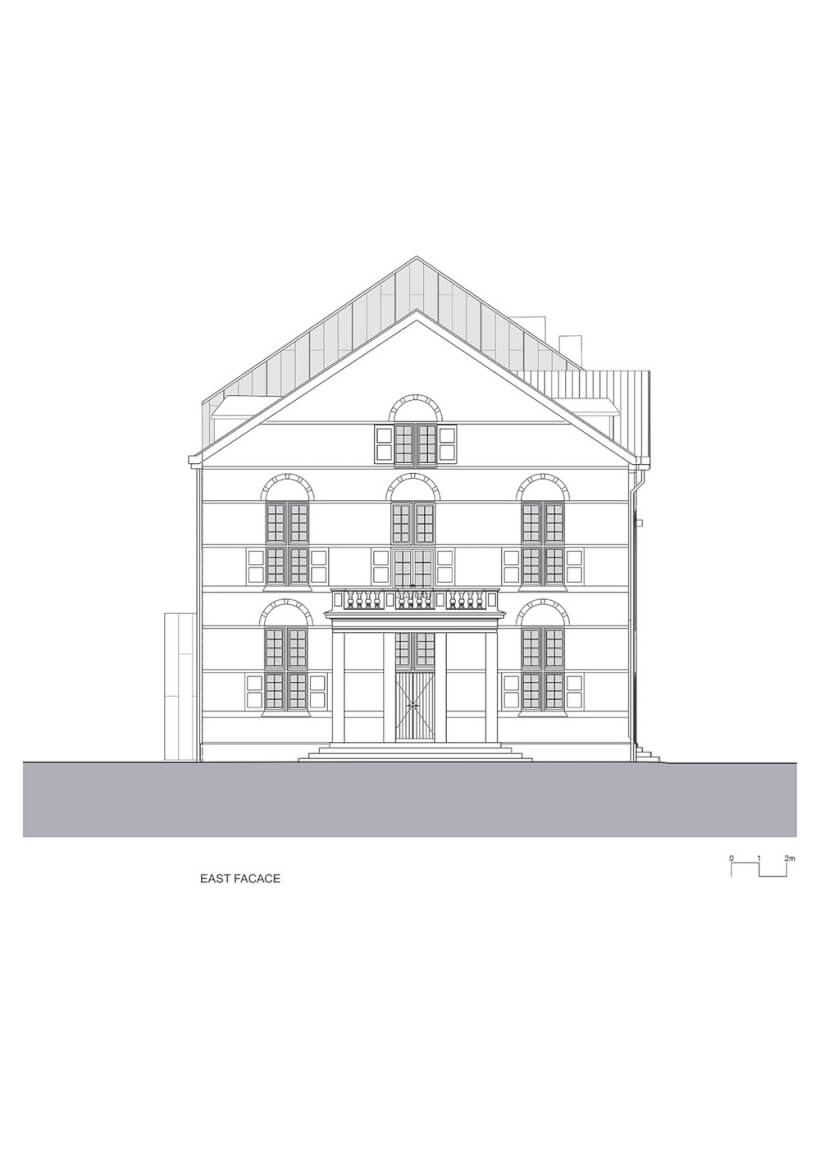
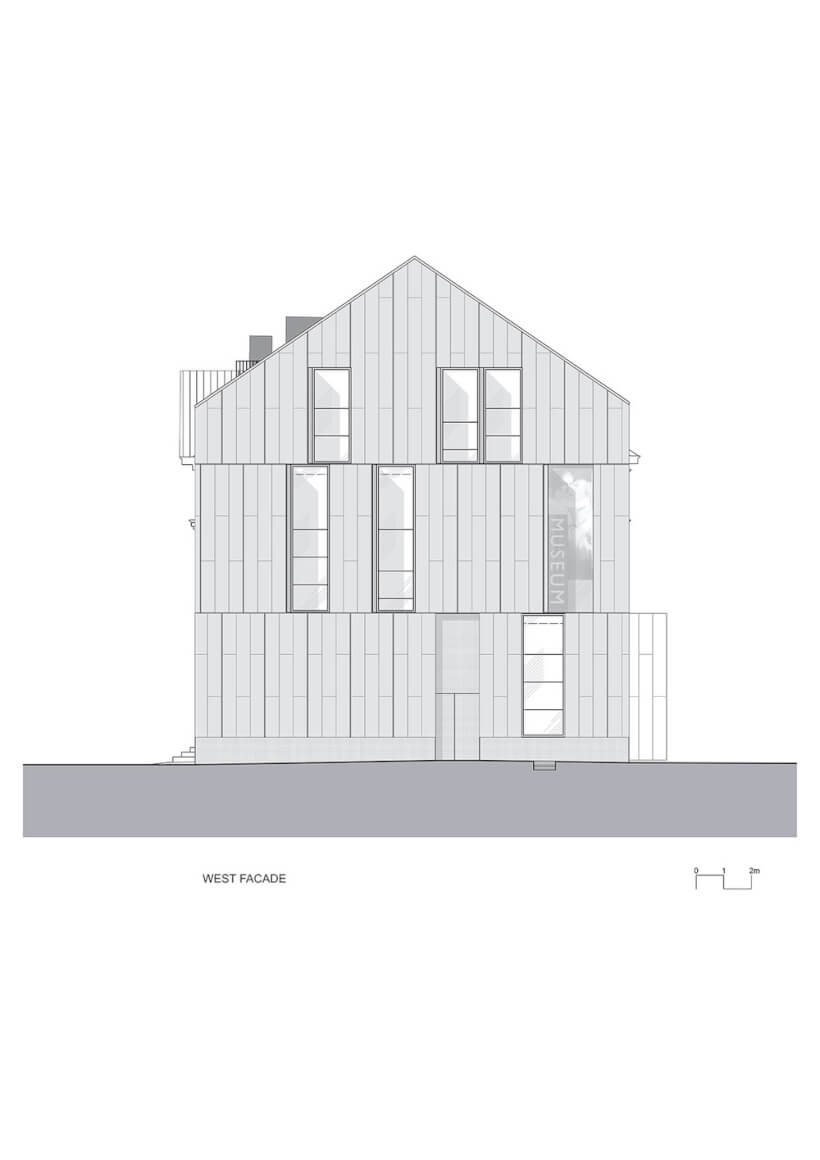

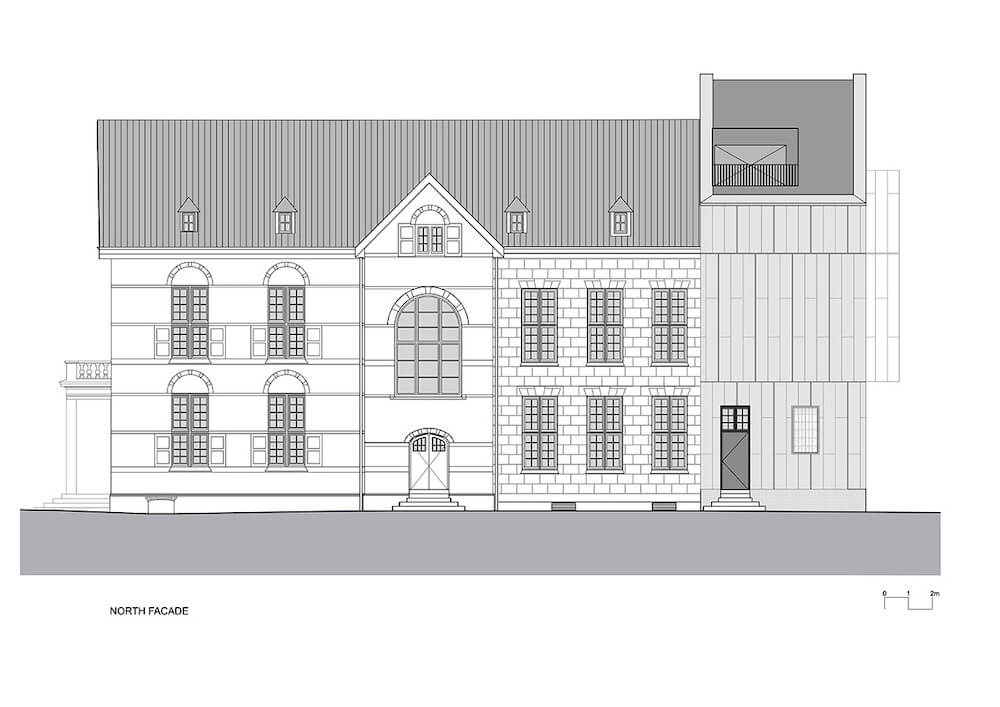
Project: Museum W
Architects: Maurice Mentjens
Design team: Marga Gilissen-Paulissen, Jeroen van de Kerkhof, Lesley Ruyters, Annet Hermans – Butink, Fabien Franzen, Sarah Philippaers, Frederic Leenarts, and Yvo Lindeman
Client: City Council Weert
Graphic designer: Studio Eikenhorst
Photographers: Arjen Schmitz

